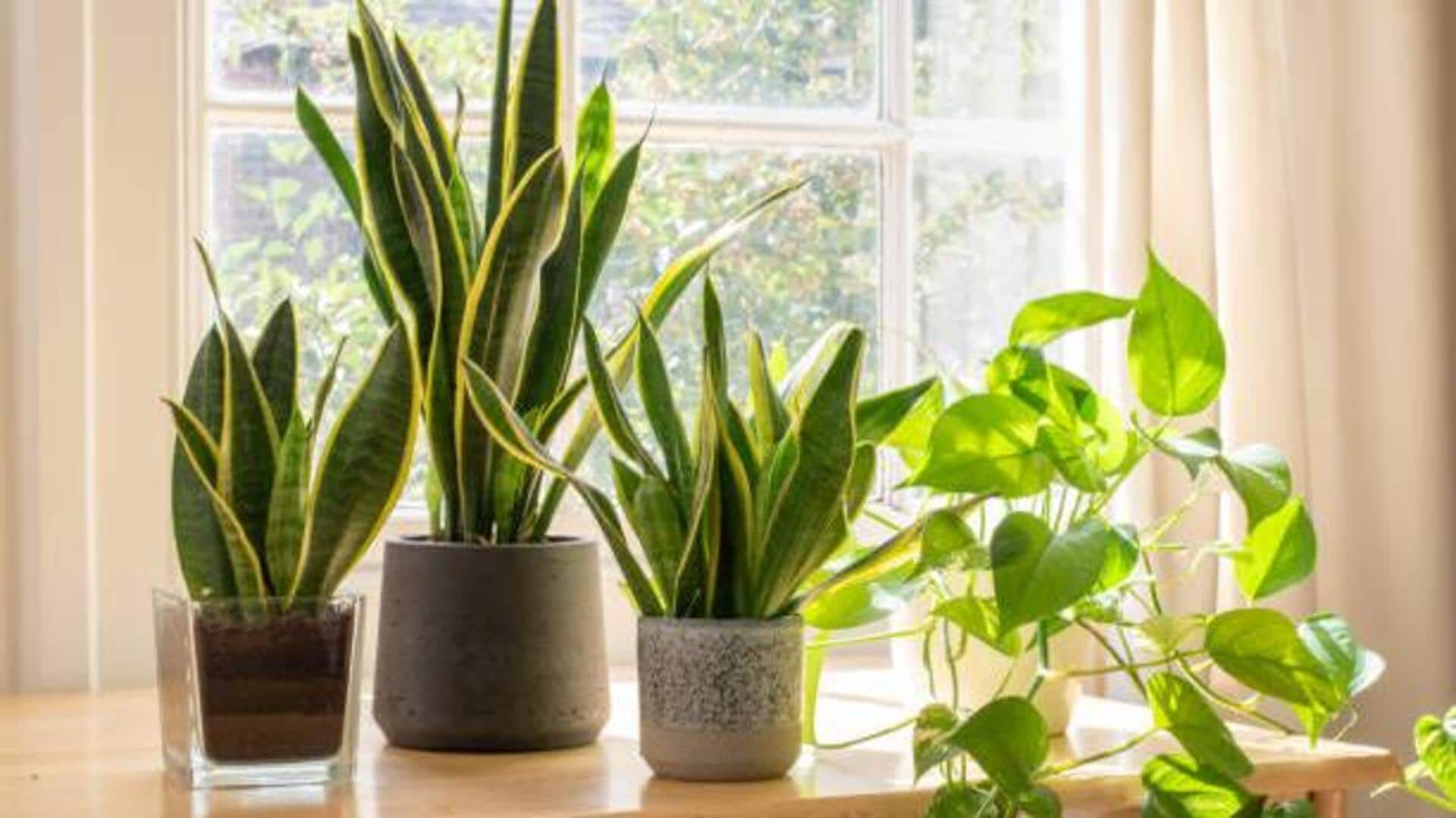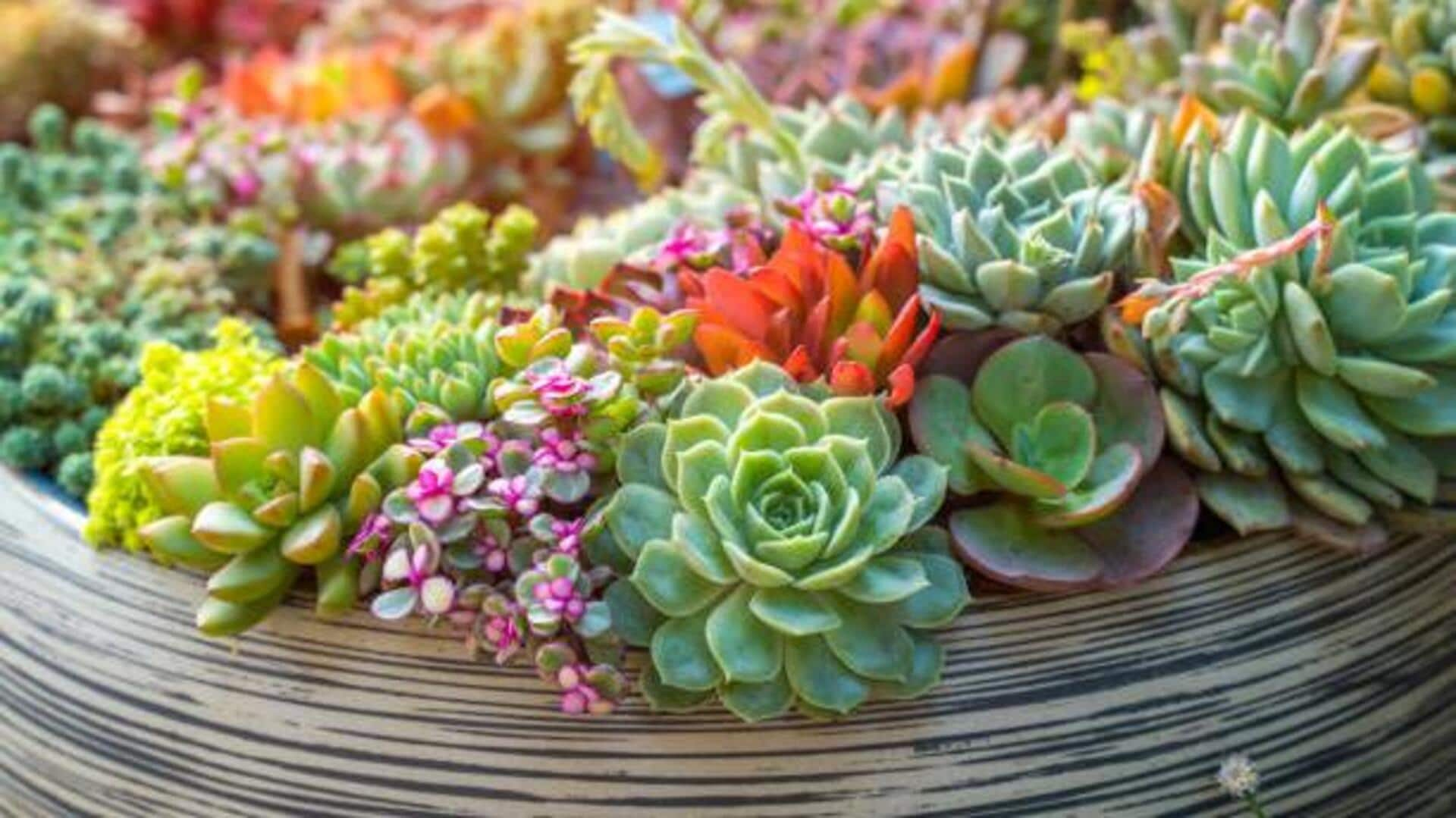Areca Palm Delight
The Areca Palm (Dypsis lutescens) is a graceful addition to any indoor garden. Its feathery, arching fronds bring a tropical vibe, making it a favorite
for adding height and elegance. To thrive, the Areca Palm appreciates bright, indirect light, which mimics its natural habitat. Direct sunlight can scorch its leaves. Water deeply when the top inch of soil feels dry, ensuring good drainage to prevent root rot. Additionally, these palms enjoy a humid environment; regular misting or the use of a pebble tray filled with water can help. Regular fertilization during the growing season (spring and summer) with a balanced liquid fertilizer will promote healthy growth and lush foliage. This plant can grow quite tall, making it a striking focal point, so ensure you have ample space. It is a good air purifier as well, making the Areca Palm a valuable addition to a healthy home.
Fiddle Leaf's Grandeur
Next on our list is the Fiddle Leaf Fig (Ficus lyrata), known for its large, violin-shaped leaves. It adds a bold statement to any room. This plant enjoys bright, indirect light, much like the Areca Palm. Rotate the plant regularly to ensure even growth and prevent it from leaning towards the light source. Water the Fiddle Leaf Fig when the top inch or two of soil is dry. Avoid overwatering, as this can lead to leaf drop and root rot. Ensure proper drainage by using a pot with drainage holes. A well-draining potting mix is crucial for the plant's health. Fertilize monthly during the growing season. The Fiddle Leaf Fig can grow quite large indoors, up to six feet or more. Consider its mature size when choosing a location, and dust the large leaves occasionally to keep them clean and efficient at photosynthesis. This plant offers a dramatic look, making it a favorite for interior design.
Rubber Plant's Resilience
The Rubber Plant (Ficus elastica) is another excellent choice. Its glossy, dark green leaves provide a striking contrast. Choose a spot with bright, indirect light for your Rubber Plant. Direct sunlight can burn its leaves, so place it near a window where the light is filtered. Water when the top inch of soil is dry. Let the excess water drain from the pot to prevent root rot. It can tolerate periods of drought, so don't worry if you miss a watering. Regularly wipe the leaves with a damp cloth to remove dust and enhance their shine. Fertilize every month during spring and summer. The Rubber Plant can grow up to six feet tall or even more. There are also different varieties of this plant available that feature variegated leaves. With its easy-going nature and beautiful foliage, the Rubber Plant is a great choice for beginners and experienced plant parents alike.
Dragon Tree's Elegance
The Dracaena Marginata (Dragon Tree) brings a touch of exotic beauty with its slender, arching leaves edged with red or purple. It is relatively low-maintenance, making it perfect for busy individuals. Place your Dragon Tree in bright, indirect light. Avoid direct sunlight, which can scorch its leaves. Water thoroughly when the top inch of soil is dry. Allow the excess water to drain from the pot to prevent root rot. These plants are tolerant of dry conditions, so they can withstand occasional neglect. Misting the leaves can improve humidity. Fertilize the Dragon Tree monthly during the growing season. These plants can also grow quite tall. Pruning the tips of the branches can help maintain the desired shape and promote bushier growth. It is known for air-purifying qualities and adds a striking visual appeal to your interior décor.
Monstera's Appeal
Monstera Deliciosa is known for its unique, split leaves, which give it its name, and are highly sought after. It thrives in bright, indirect light, so place it near a window but away from direct sunlight. Allow the top inch or two of the soil to dry out before watering. Overwatering can lead to root rot, so proper drainage is crucial. Provide support with a moss pole or trellis, as the Monstera can become quite large and sprawling. Fertilize every month during the growing season. The Monstera is known for its air-purifying qualities. It is a popular choice among plant enthusiasts due to its distinctive appearance and relatively easy care requirements. Wiping the leaves with a damp cloth ensures it can thrive in the indoor environment. It adds a tropical feel to any space and its iconic leaves offer visual intrigue.
Parlor Palm's Grace
The Parlor Palm (Chamaedorea elegans) is a classic, elegant choice for adding a touch of greenery to any space. It is known for its graceful, arching fronds. The Parlor Palm thrives in moderate to low light conditions, making it well-suited for various indoor environments. Avoid direct sunlight, which can scorch its leaves. Water when the top inch of soil feels dry. Allow the excess water to drain from the pot. These palms prefer a humid environment. Mist the leaves regularly or place the pot on a pebble tray filled with water. Fertilize monthly during the growing season. The Parlor Palm is a relatively slow grower, making it ideal for smaller spaces. It is a wonderful air purifier. It offers a touch of elegance and sophistication to any room, providing a calming, peaceful ambiance. Its low-maintenance nature makes it a great choice for both beginner and experienced plant lovers.






